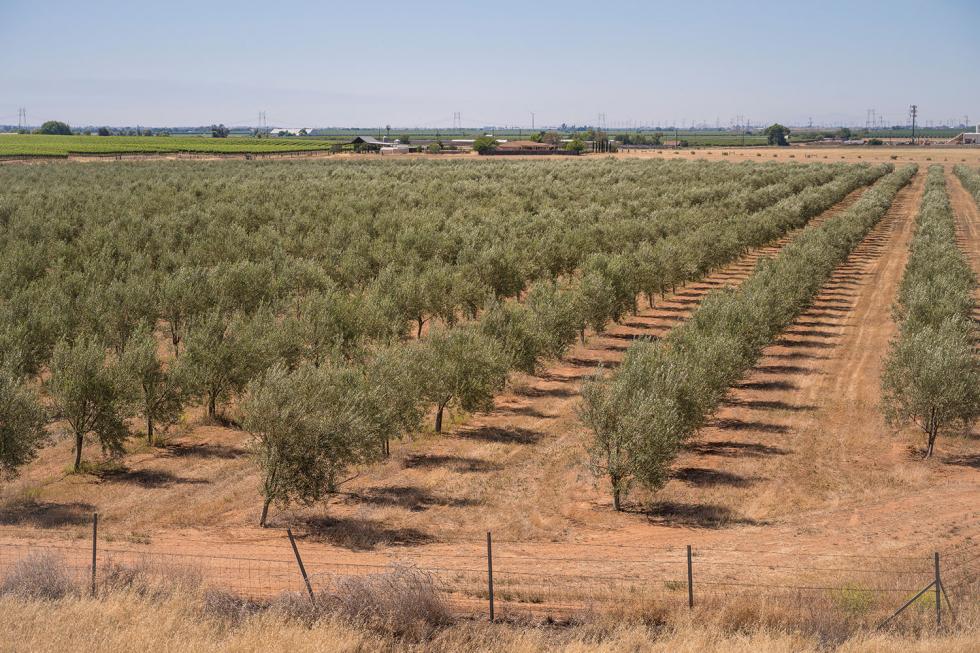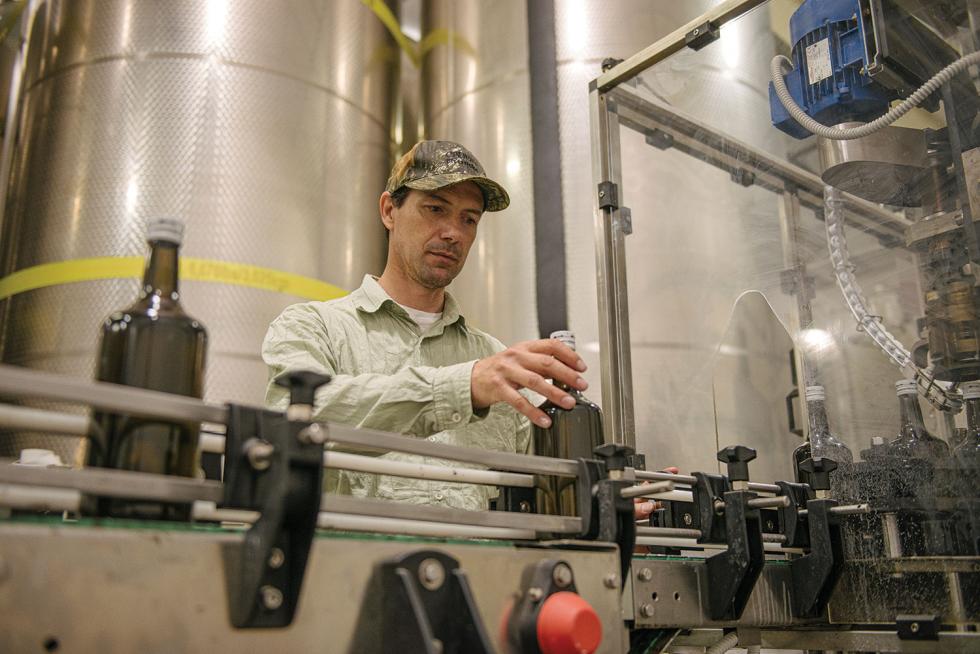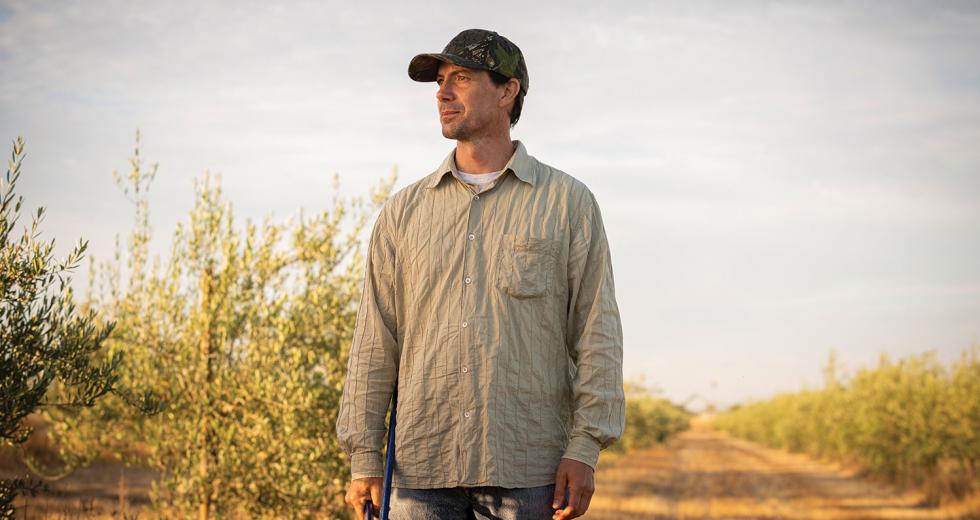Sebastian Bariani guns his two-seater Kawasaki utility vehicle through his family’s 180 acres of olive trees in Zamora in Yolo County. The cart bounces up and down as he zooms through the orchards, startling jackrabbits who hop away. Bariani is checking on this year’s growth of 30,000 olive trees, which produce 33,000 gallons of Bariani Olive Oil a year.
Bariani’s parents, Angelo and Santa, and two brothers, Enrico and Emanuele, moved from Italy to Sacramento in 1990, and the family’s olive oil is sold in local speciality stores such as Taylor’s Market and Corti Brothers (food and wine legend Darrell Corti says he was the first to carry Bariani oil), and Martha Stewart even filmed a segment with the family back in 1997.
Olive oil originated thousands of years ago in the Mediterranean and was revered in Greek mythology with the legend of the goddess Athena, who touched her spear into the ground and produced an olive tree. Olive oil is popular due to its heart-healthy, monounsaturated fats and is a staple in the Mediterranean, ketogenic and paleo diets. There are thousands of varieties of olives in the world, reports the University of California Organic Olive Production Manual, and about 75 in California, according to Dan Flynn, executive director of the UC Davis Olive Center.
About 90 percent of the world’s olive oil comes from Greece, Spain and Italy — and that’s mostly what’s available on grocery store shelves — and California produces less than 5 percent, according to the Olive Oil Commission of California. The OOCC and olive farmers in the state are determined to carve out a bigger market share and become known as a producer of high-quality olive oil. And much of that olive oil is being produced in the Mediterranean climate of the Sacramento Valley.
‘Crop of the Future’
California farmers, like the Bariani family, want to become known
as producers of high-quality olive oil.

In California, about 400 farmers are using 41,000 acres to grow olive trees, according to the California Olive Oil Council. The 2019 crop produced an estimated 4 million gallons of olive oil from that November’s harvest, according to COOC, which is based in Berkeley. Spanish settlers planted the first olive trees to the U.S. in the 1800s, and farmers took branches and planted their own vineyards around the state. California’s most popular olive is now the mission olive.
The Sacramento-based OOCC, founded in 2013, promotes olive oil produced in California. “Almost all the olive oil produced in the United States is in California,” says Executive Director Chris Zanobini. “We have the highest standards in the world,” he claims.
“We all want the California name recognized for quality. When (customers) taste a good olive oil, then go back to their supermarket brands, they can tell the difference.” Felipe Ternero, ownerTernero Olive Oil
Those standards include chemistry lab tests to verify the quality of the oil as well as a sensory test for the nose (smell) and taste. The commission works with the California Department of Food and Agriculture to take samples of six different olive oil lots and send them to a laboratory in New Orleans for the chemical panel and another panel for the sensory taste. The results determine whether the oil is extra virgin or not.
“We believe olives are California’s crop of the future,” Flynn says. “Because as the water supply tightens up, either through state policy or extended drought periods, we’re seeing a longer, warmer season — olives are really well-suited to manage that more than other crops. … One of our goals in the next 10 years is to try (to) double the yields the growers are getting from their existing trees so that this becomes a very competitive crop as we look at competitive water supplies.”
The UC Davis Olive Center had an interesting start. Olive trees on campus were dropping olives on paths, causing walkers and bicyclists to slip. A landscape manager suggested picking the olives and using them. Flynn proposed the creation of the center, which is part of the Robert Mondavi Institute for Wine and Food Science. UC Davis now harvests 300-500 gallons of olive oil a year, which is sold in the campus bookstore and online, according to Flynn.
Corti, who has judged olive oil tastings, would not comment on the quality of California olive oil versus European oils. Instead Corti diplomatically says, “If it’s made properly, it can be very, very good.”
Marketing California Oil
The Bariani family produces about 33,000 gallons of olive oil
annually.

The Barianis started producing olive oil from a small plot with existing trees they owned in Sacramento. They moved to their Zamora ranch in 2004 and began planting the next year. The Bariani family grows manzanilla and mission olive trees — both originally from Spain. “Many people told us to plant Italian varieties because we’re Italian and produce Italian olive oil or at least Italian-style olive oil,” Bariani says. “We decided to stay true to the land and those two California trees.”
It takes about five years for an olive tree to start producing. The Barianis harvest the olives by hand in November, prune the trees in the spring and spread the leftover olive paste around the trees as compost. “We’re a family company, family-owned, family-run,” Bariani says. “We do everything ourselves.”
At Ternero Farms and Ternero Olive Oil in Lincoln, Felipe and Lisa Ternero tend to 2,000 trees. Felipe Ternero grew up in Spain and eventually took over the family farm. He came to the U.S. to attend Chico State, where he met his wife, who marketed the olive oil through school fundraisers before the coronavirus hit. Ternero says olives are like grapes, meaning that every year the crop is a little bit different. He plants six different varieties: kalamata, taggiasca, frantoio, picual, mission and arbequina. The Terneros also have an orchard in Oroville and 1,000 acres in Spain. “The best olive oils are balanced; it means you have to have fruity, pungent and bitterness,” Ternero says.
During the fall harvest, olives are picked by hand, shaken with a machine or plucked with a harvester. They are immediately taken to a mill for the freshest processing. First, they are de-leafed and washed, and then a steel mill crushes the olives, pit and all. The oil is separated from the paste in a centrifuge.
Most local small olive oil farmers sell online, at farmers markets or in specialty stores. The olive tree farmers of the Sacramento Valley support each other, say both Bariani and Ternero. They want everyone to know about their quality product. “We all want the California name recognized for quality,” Ternero says. “When (customers) taste a good olive oil, then go back to their supermarket brands, they can tell the difference. At the end of the day, the people have to choose and educate themselves.”
—
Stay up to date on business in the Capital Region: Subscribe to the Comstock’s newsletter today.
Recommended For You

In the Making: A Fresh Crush at Coldani Olive Ranch
Unlike a typical orchard with rows of olive trees, Coldani Olive Ranch’s olives are grown on trellises, resulting in dense, long walls of olives for its oil label, Calivirgin.

Follow Her Lead: Karen Bond
As the country celebrates the 100th anniversary of the 19th Amendment, we profile 19 leaders in the Capital Region
“If customers believe that you’re passionate about what you’re doing, they feel it,” says Karen Bond, CEO and cofounder of the medical technology company Cedaron.

Old Roots, New Branches
Bariani Olive Oil — the elixir of the gods
Sebastian Bariani is in heaven, standing in his family’s olive grove in the Dunnigan Hills. The winter day is mild, a blue sky caps the rolling green terrain. He reaches down and gently bends the branch of a Manzanillo olive tree to demonstrate how the trees will soon be pruned, explaining that the blossoms for the next crop can come only from new growth.

The Woodland Way
With a progressive pro-business climate, Woodland lures agribusiness and global trade to this once-sleepy town
This once rural town now houses more than two dozen international companies and has become a hub of agribusiness, thanks to its progressive pro-business climate and ideal location.




